Journal list menu
Export Citations
Download PDFs
Cover Picture
Cover Picture: Ann. Phys. 3-4'2015
- First Published: 07 April 2015
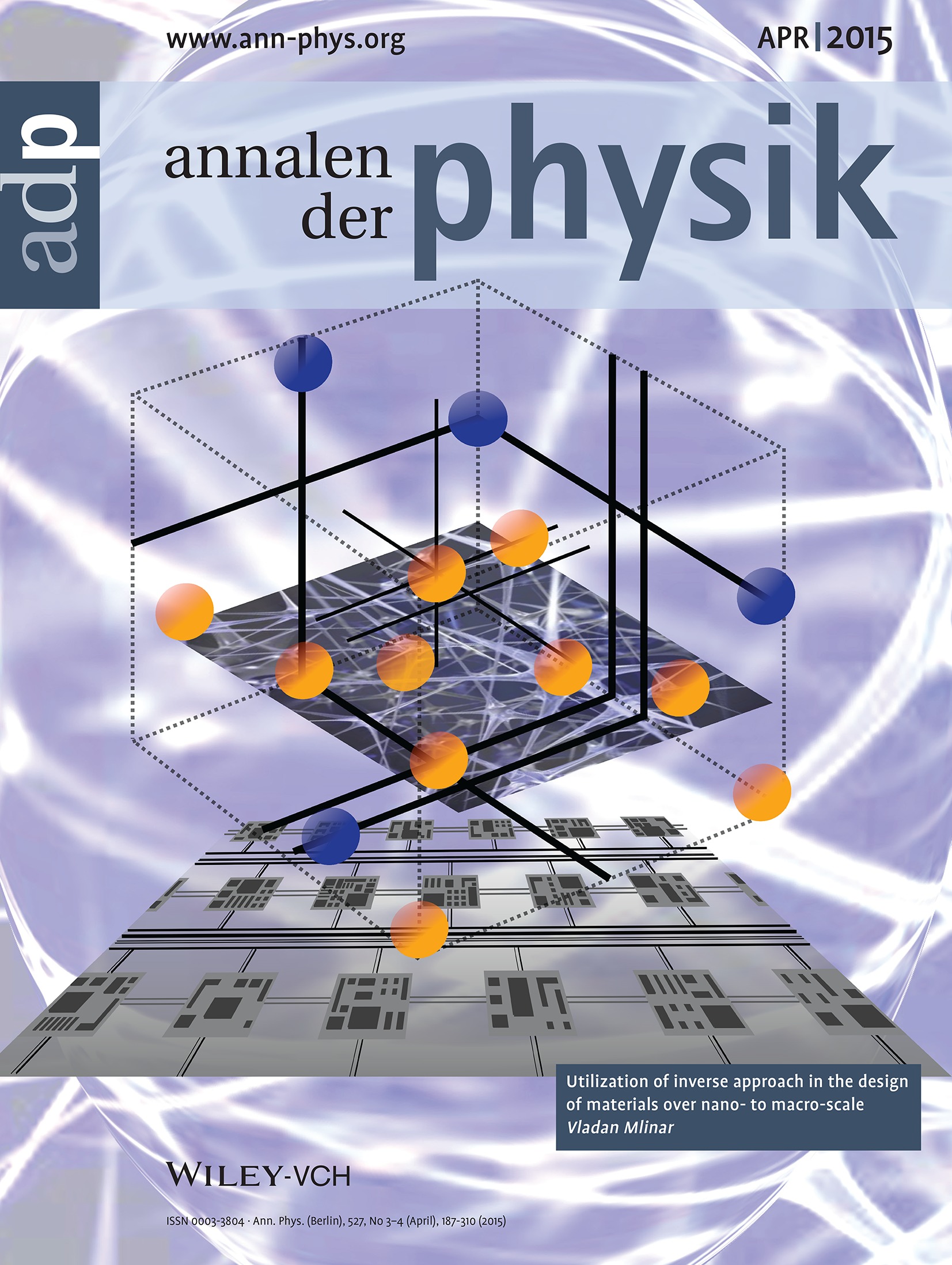
An ideal way to design a material with a specific property would be to solve an inverse problem: use a physical property to predict structure. In his review, Vladan Mlinar proposes strategies of utilizing an inverse approach to design materials over nano- to macro-scales are discussed. Risks and limitations of the approach are analyzed and its dependence on factors such as structure parametrization, approximations in theoretical models, feedback from structural characterization is addressed.
Picture: V. Mlinar, pp. 187-204 in this issue
Back Cover
Back Cover: Ann. Phys. 3-4'2015
- First Published: 07 April 2015
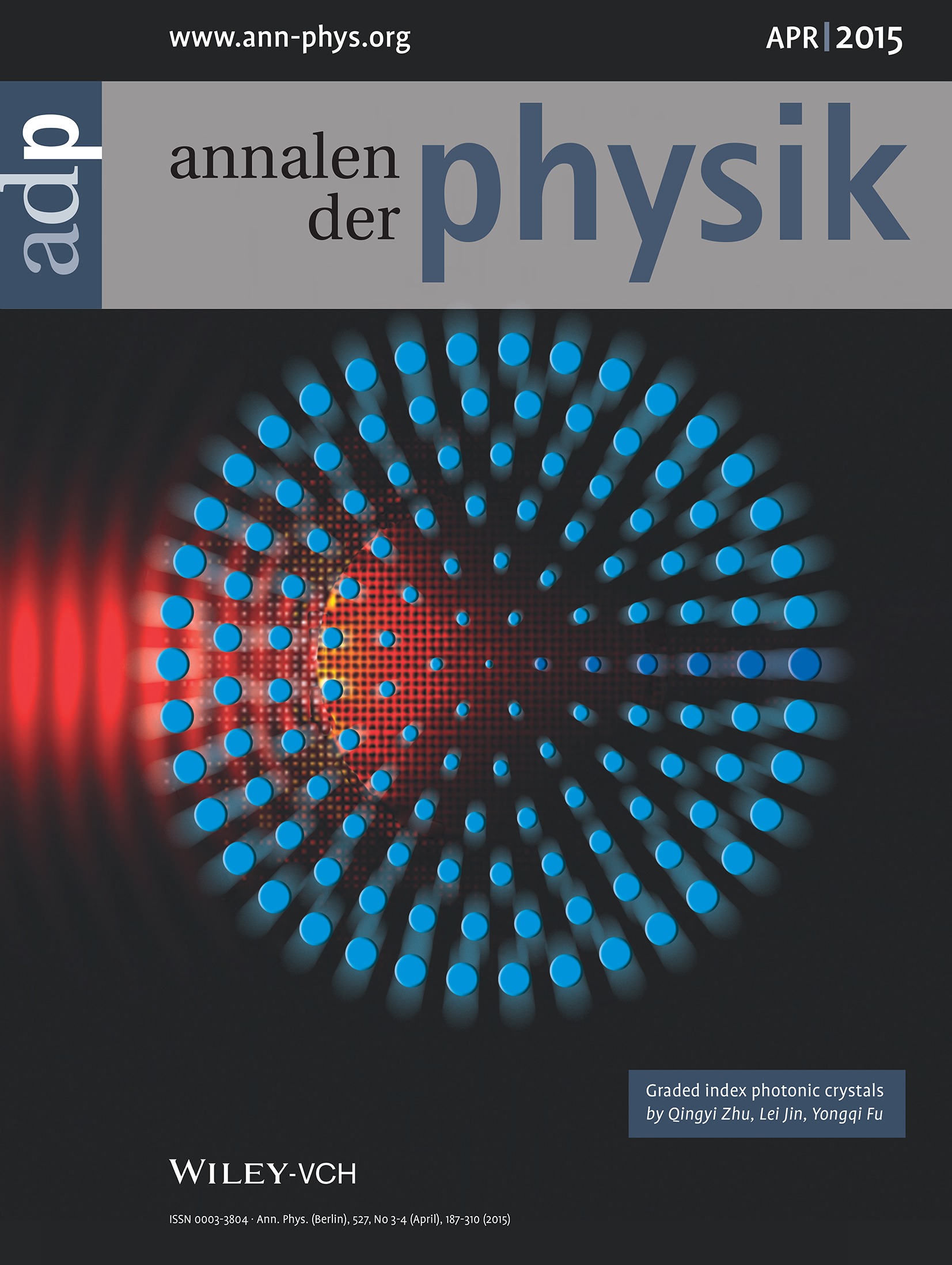
A new type of photonic crystal (PC) named graded index 2 (GRIN) PC was proposed by E. Centeno in 2005. It is obtained by appropriately modifying the parameters of a regular PC, thus resulting in gradual index variation. In their review, Qingyi Zhu, Lei Jin, and Yongqi Fu introduce different ways of designing GRIN PCs from both theoretical and experimental point of views. They proposed a GRIN PC with radial index variation (pp. 205–218). Some typical applications based on GRIN PCs are presented, followed by the focusing mechanism of GRIN PC.
Issue Information
Call for Papers
Contents
Retrospect
RETROSPECT – Highlights from recent Annalen der Physik issues
- Page: A27
- First Published: 07 April 2015
Advisory Board
Physics Forum
Then & Now
Majorana, Pauling and the quantum theory of the chemical bond
- Pages: A29-A33
- First Published: 07 April 2015
Special Features
Physics Forum
Expert Opinion
Nanowires entangled photons can advance integrated quantum photonic circuits
- Pages: A35-A37
- First Published: 07 April 2015
Review Article
Utilization of inverse approach in the design of materials over nano- to macro-scale
- Pages: 187-204
- First Published: 10 March 2015
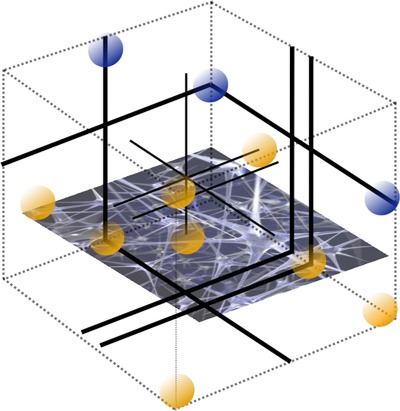
An ideal way to design a material with a specific property would be to solve an inverse problem: use a physical property to predict structure. Here, proposed strategies of utilizing an inverse approach to design materials over nano- to macro-scales are discussed. Risks and limitations of the approach are analyzed and its dependence on factors such as structure parametrization, approximations in theoretical models, feedback from structural characterization is addressed.
Graded index photonic crystals: A review
- Pages: 205-218
- First Published: 13 March 2015

Graded index photonic crystal is a new type of photonic crystals. This review firstly introduces different ways of designing graded index photonic crystals. Then the emphasis is put on typical applications of graded index photonics crystals. Calculating the effective refractive index and the focusing mechanism of the graded index photonic crystals is also discussed in the review.
X-ray and neutron scattering on disordered nanosize clusters: a case study of lead-zirconate-titanate solid solutions
- Pages: 219-237
- First Published: 24 March 2015

Methods for modelling technologically important defects are reviewed. A numerical approach for simulating scattering intensities from clusters of different size and shape, possessing co-existing defects, is given. As an example material lead-zirconate- titanate is used, a classical and probably the most widely used ferro- and piezoelectric material. It is demonstrated how complex disorder cases can be modeled and pinpoint the signatures in x-ray and neutron scattering intensity evidencing crystalline disorder.
Original Papers
Energetic damping in electronic transport simulations on finite systems
- Pages: 239-247
- First Published: 23 December 2014
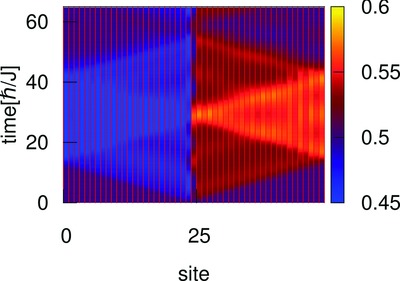
In this paper, an implementation of energetic damping for fermionic transport simulations which respects particle conservation is presented. For this, nonhermitian terms in the Hamiltonian of the system are used. After an explanation of the method, it is demonstrated studying the current over time and I/V characteristics in the noninteracting resonant level model for spinless fermions.
Diffusion slowdown in the nanostructured liquid Ga-Sn alloy
- Pages: 248-253
- First Published: 12 January 2015
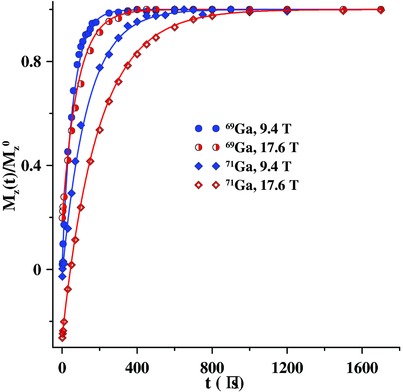
Nuclear spin relaxation of gallium isotopes in melted Ga-Sn alloy under nanoconfinement is much faster than in bulk, depends on field and isotope, and is dominated by quadrupole coupling. The evaluated time of atomic mobility increases gradually with decreasing pore size. Knight shift decreases under nanoconfinement depending on pore sizes.
Relic photon temperature versus redshift and the cosmic neutrino background
- Pages: 254-264
- First Published: 29 January 2015

A late-time modification of the (conformal) relation between the FLRW scale factor and the temperature of the cosmic microwave background is derived based on the postulate that fundamentally an SU(2) gauge principle underlies photon propagation. Consequences constructively address early re-ionisation, dark matter in the early universe, and the physics of cosmic neutrinos.
Nonlocal effects in black body radiation
- Pages: 265-277
- First Published: 20 January 2015
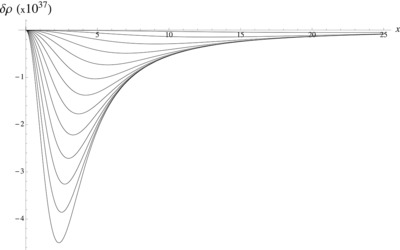
Nonlocal electrodynamics is a formalism developed to include nonlocal effects in the measurement process in order to account for the impossibility of instantaneous measurement of physical fields. This theory modifies Maxwell's electrodynamics by eliminating the hypothesis of locality that assumes an accelerated observer simultaneously equivalent to a comoving inertial frame of reference. In this scenario, the transformation between an inertial and accelerated observer is generalized which affects the properties of physical fields. It is analyzed how a uniformly accelerated observer perceives a homogeneous and isotropic black body radiation.
Comparative analysis of electric field influence on the quantum wells with different boundary conditions.
I. Energy spectrum, quantum information entropy and polarization
- Pages: 278-295
- First Published: 18 March 2015
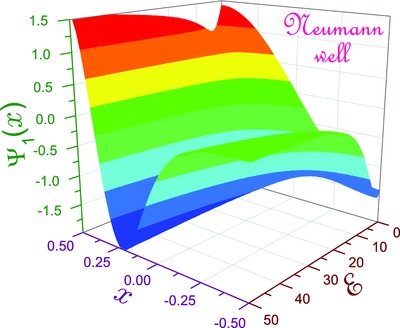
Qualitative – and to the large degree of precision, quantitative – explanation of the negative polarization of the excited states of the quantum well with arbitrary permutation of the Dirichlet and Neumann boundary conditions is based on the perturbation analysis of the evolution of the wave function under applied electric fields that also lead to the modification of the space and momentum quantum information entropies, which, however, always satisfy entropic uncertainty relation.
Comparative analysis of electric field influence on the quantum wells with different boundary conditions: II. Thermodynamic properties
- Pages: 296-310
- First Published: 16 March 2015
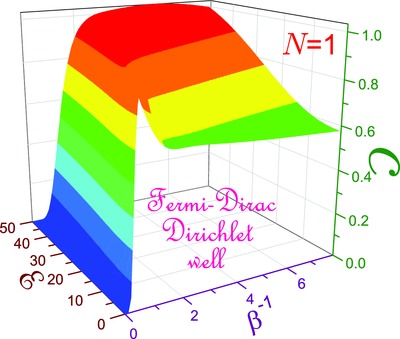
Heat capacity for one fermion, contrary to the many-particle case, in the flat quantum well exhibits a pronounced maximum whose location on the temperature axis depends on the type of the boundary conditions and which is qualitatively and quantitatively explained by the interplay between the two lowest states. Electric field smoothes out and widens these extrema leading also to the evolution of other thermodynamic properties considered in canonical and two grand canonical ensembles.





